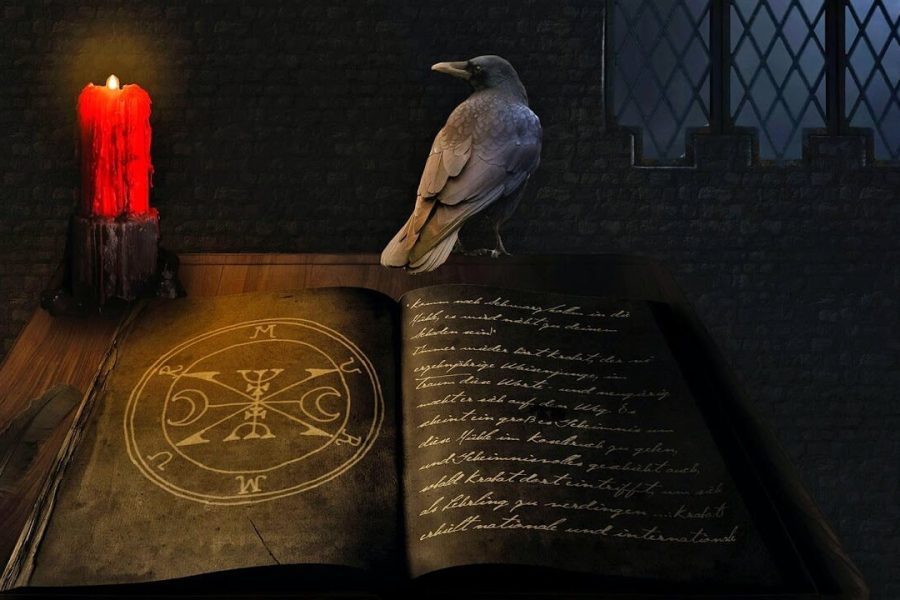Sometimes it's hard to find uniqueness in the world. A million people probably have the same hairstyle as you, or like the same movies, or eat the same favorite foods. The animal kingdom is no different. But for every trait or feature, there will always be one thing, one creature that first exhibited it or used it. And there are some other features that are so unique that only one living creature can lay claim to them.
10. A supposedly extinct rodent appeared to take a photo, then disappeared again.
The Colombian red-crested tree rat is pretty cute for a jungle rat, but not many people can confirm that in real life. The animal was first discovered in 1898, and it wasn’t until 1913 that it was seen again. That was also the last time anyone saw it for almost a century.
After nearly a hundred years, it seemed that the rat had probably died out and was considered extinct. Researchers looking for specimens of the creature had little luck finding any evidence.
In 2011, a couple of volunteers were taking wildlife photographs when a rat suddenly appeared and stayed in sight for two hours, where they were able to photograph it before it disappeared back into the forest. This even allowed them to get in close for detailed, close-up images. It hasn't been seen since either.
9. The walnut has a movable anus.
The sea nut, also known as the wart comb jelly, is an animal that seems to have been specifically designed for immature humans to laugh at. A type of jellyfish, this small, translucent, and extremely rare creature has the only known example in nature of what scientists have dubbed a “transient anus.” That means exactly what it sounds like: this animal has a vagrant anus.
As waste accumulates inside the walnut, it must be expelled, just like any other animal. But unlike the rest of us, the walnut doesn't have a hole to do this. Instead, the pressure pushes the waste anywhere. Literally anywhere on the creature's body, and then forces it out, like poking your finger into plastic wrap. Once the waste is out, the hole closes, and the next time it pops out, it'll probably pop out somewhere else.
8. A troop of baboons in Kenya became peaceful and taught others to do the same

In the primate world, baboons aren't usually considered the most cold-blooded animals. They have a reputation for being aggressive. And that's why the group of animals made international news back in the 1980s. Not for their aggression, but for the way they managed to do a 180-degree turn in their behavior.
A severe outbreak of tuberculosis struck a troop of baboons in Kenya. The main victims of the disease were the most aggressive males - the ones most prone to violence and aggression, what we humans might call alphas. There were other males in the troop, but they were not as strong and therefore not as aggressive. So a funny thing happened when the violent ones died out. The remaining females, the young baboons, and the gentle, docile males simply continued to live as a pacifist troop.
Instead of a new, aggressive leader taking over, the remaining baboons were generally kind and caring toward one another. Grooming took precedence over violent attacks. Even more strikingly, as scientists studied the troop for another 20 years, even as the pacifist males died out and new males either became more dominant or even joined them from other troops, the behavior persisted. The troop remained generally calm, passive, and caring toward its own.
The researchers agreed that the group should be able to teach outsiders this kinder way of life when they joined, although they didn't know how to do this.
7. Sea sponges can recover after being destroyed

Some things are true for most living things. Most of us like food, water, and air, even if we take them out of water to survive. Not so many things like fire. And most of us don’t like being confined to individual cells, because it’s really uncomfortable. However, if you’re a sponge, at least you can overcome that. No other organism can.
The sponges can be taken apart down to individual cells, and over time they will reassemble into a single organism, like a simple version of the T-1000 from Terminator 2 .
You can even watch a frame-by-frame video of sponges in labs being passed through sieves and pulled apart. Their cells will reassemble and recombine, forming new sponges that can continue to live their lives.
6. The fish parasite does not need oxygen at all

In the last post we mentioned that most living things like oxygen. Even sea creatures use gills or other means to get oxygen from the water to keep themselves alive. But a parasite known asHenneguya salminicola, is distinguished by its complete lack of concern for oxygen. Scientists have discovered that it is the only living animal that cannot breathe oxygen and therefore does not need this element.
The parasite infects salmon and trout and causes a condition called tapioca disease. The parasites form white nodules on the flesh of the fish. They are very small, with only 10 cells making up one of these parasites, and they are smaller than most cells in the human body. But they do not have mitochondria, so they do not convert sugar and oxygen into energy. In fact, scientists are not sure what powers the parasite's cells, although they suspect that they steal some of the energy from their hosts.
5. Praying mantises are the only creatures with one ear.

In the insect world, praying mantises stand out for being some of the coolest creatures on Earth, especially orchid mantises. And the female praying mantis's penchant for eating the males' heads after mating, and sometimes during, also captures many people's imaginations. But while this is interesting, it's not technically unique. Many spiders also eat their mates. But praying mantises do have one unique claim to fame, and that's the cyclops ear.
It was long thought that the praying mantis was deaf because it had no ears. But scientists were looking in the wrong place. The only ear capable of hearing the ultrasonic cries of bats is located inside the praying mantis's rib cage, smack dab in the middle of its chest. There's only one of these, and that seems to be all the insect needs, given its central location.
Praying mantises' hearing is so good that they can detect a pursuing bat in mid-air and bank and then dive like a fighter jet straight to the ground, gaining speed as they do so to avoid the predator.
4. A species of deep-sea snail makes armor out of iron

There are a few animals in the world that we usually think of as armored. Turtles, armadillos, crabs, and snails usually come to mind. But these are not armor in the human sense, of course, but simply a kind of shell or carapace that is strong and durable, and provides a certain degree of protection. Except, perhaps, for one species of snail. Scaly snails use actual iron to make their shells, and they are the only animals that do so.
The snails live near thermal vents in the Indian Ocean. The water around these vents reaches temperatures of 400 degrees Celsius, four times hotter than boiling water. They use the minerals that spew out of these vents to form their shells, so while some use iron sulphide, others use pyrite or fool's gold, as well as gregite. From this material they form their shells, as well as the plates that cover their soft feet.
Regular snails have two layers of shell. One is calcium carbonate, the inner layer, which helps dissipate heat. These iron snails have it. The next layer, or outer shell, is tougher, which helps absorb damage and protect the snail from predators.
These deep-sea snails have a third layer, and this is where metal comes in. Iron or other elements form a coating of nanoparticles on the shell. If a predator tries to crush the snail, these particles help absorb damage and also dull the attacker's claws or teeth. It's so effective that the military is even studying how it works in hopes of creating new types of armor.
3. One species of skink has lime green insides.

For a character like Spock from"Star Trek" seemed a little more alien than just a guy with pointy ears, the producers gave him green blood. In older science fiction, you'll find few things stranger than the color green. After all, little green men were a cliche. They're not something we're used to in life, other than plants and lizards on Earth. But when lizards on Earth turn green, some of them go all out. Like the skink, for example. Skinks are so green that they're the only animals in the world that also turn green on the inside.
The inside of a certain species of skinks of the genusPrasinohaema bright green. Bright green blood, bright green organs, even bright green bones. It's unlike anything else you'll find in nature. It comes from a compound called biliverdin, which is highly toxic to most life forms. It's usually a waste product from the breakdown of red blood cells. Humans produce something similar called bilirubin. If we can't eliminate it, it leads to jaundice, a yellowing of the skin.
The compound isn't really a defense mechanism, since birds still eat lizards. And it's not camouflage, since not all of them are green on the outside. So the researchers speculate, and it's not proven, that maybe it protects against parasites.
2. The Pyrenean ibex is the only species to have become extinct twice.

Is the Pyrenean ibex the unluckiest animal in history? Maybe. Sure, there are plenty of creatures that could lay claim to that title, but luck is a sort of diffuse and malleable attribute, so by some standards you could definitely say that nothing else is unlucky. So how do we measure luck? In this case, we do it by including death. The Pyrenean ibex has died more than any other species in history because it is the only species to have had to endure total extinction not once, but twice.
As their name suggests, these antelope-like animals once called the Pyrenees Mountains home. Their numbers dwindled throughout the 20th century, and by 1997, only one remained alive. That individual's body was discovered in 2000, crushed under a fallen tree. Thus, the millennium began with the first extinction of the Pyrenean ibex.
The last ibex's genetic material was collected long before she died. A team of scientists set about cloning her and inserted her genetic material into the egg of a goat that had been stripped of its own. They created 57 embryos and implanted them into another species of ibex. Only seven of the creatures became pregnant, and only one of them was able to give birth.
In 2003, the Pyrenean ibex stopped going extinct when a new baby was born. However, the celebration was short-lived as the baby had a severe respiratory disease. It survived for about 10 minutes before the species went extinct again.
1. Hagfish are the only animals that have a skull but no spines.
Hagfish have a bit of an internet reputation due to their unusually phallic appearance and the fact that they produce copious amounts of incredibly thick mucus as a defense mechanism. Numerous hagfish can turn vast swaths of ocean water into nothing more than a salty jelly mold to trap and potentially suffocate predators.
While these are unique features, they are not the most unusual about these creatures. Hagfish are the only animals that have a skull in their head but no spine connected to it. Without vertebrae, they are technically not vertebrates. They also lack jaws, and their skeleton is made of cartilage rather than bone.













Оставить Комментарий